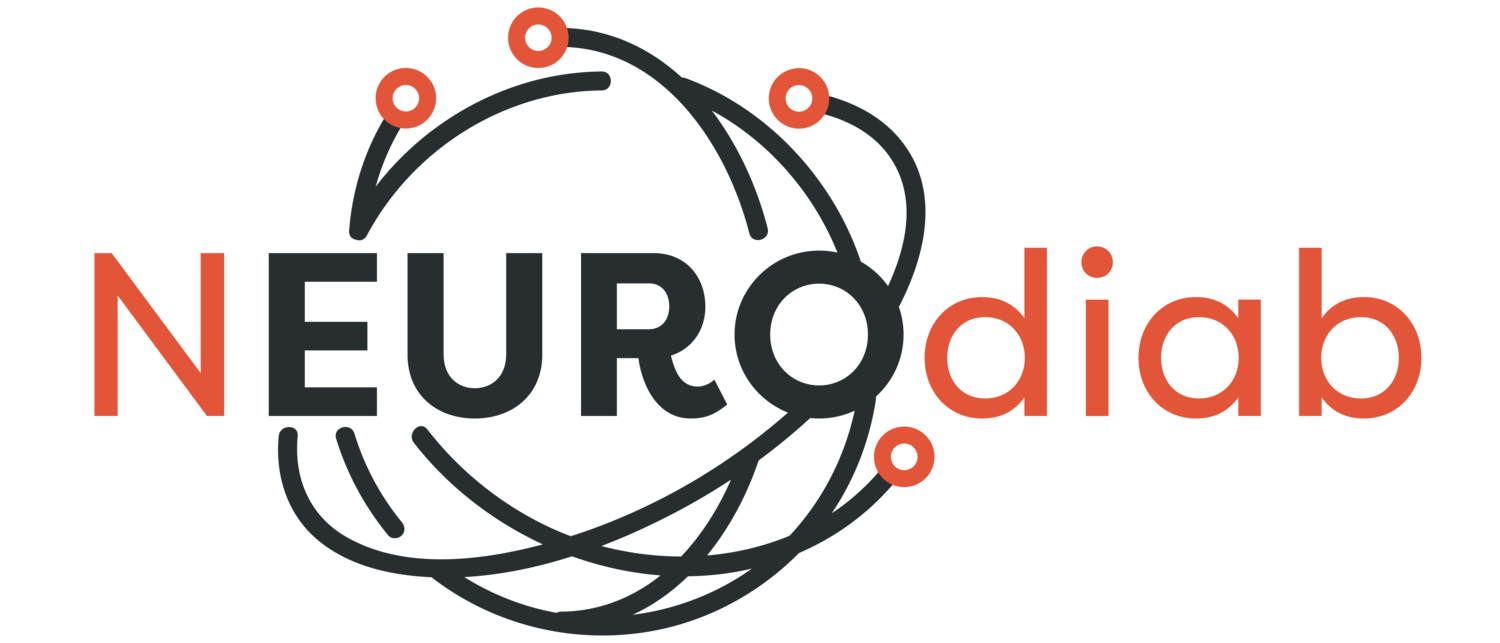Publication News 195 - 06 October 2025
Reading between the BOLD lines: multimodal MRI signatures of type 1 diabetic neuropathy
Aims: To determine whether brain multimodal magnetic resonance imaging (MRI) can distinguish between healthy controls (HC), type 1 diabetes without neuropathy (T1D), and with painful or painless diabetic peripheral neuropathy (DPN) and identify brain features associated with pain phenotypes using supervised machine-learning.
Methods: A total of 76 participants (HC: n = 20; T1D: n = 56 underwent Douleur Neuropathique 4 Questions (DN4) questionnaire, thermal quantitative sensory testing (QST), sural nerve conduction velocity (NCV), structural T1-weighted MRI, resting-state functional MRI, and proton magnetic resonance spectroscopy (MRS) at 3 T. Groups were stratified as without DPN (n=18), painless DPN (n=19), or painful DPN (n=19). Brain features (n=167) were extracted encompassing volumes, cortical morphometry, connectivity, and metabolite ratios such as N-acetylaspartate/creatine (NAA/Cr). Supervised machine-learning classifiers with nested cross-validation were trained to distinguish participant phenotypes. SHapley Additive exPlanations (SHAP) were used to select features and explain the model. Predicted probabilities of what group each individual belonged to was correlated with DN4, pain scores, sural NCV, thermal QST, age, diabetes duration, and HbA1c.
Results: Logistic regression with support vector machine (SVM) learning-based feature selection achieved the highest accuracy (0.71), correctly classifying 75% HC, 88.8% T1D, 84.2% painful DPN, while only 36.8% of painless DPN were correctly identified. Functional connectivity measures had the greatest contribution to classification followed by parietal NAA/Cr ratio and sulcus depth. Lower hippocampus-orbital gyrus connectivity and reduced postcentral gyrus connectivity were most important for painful DPN whereas higher thalamocortical connectivity characterised T1D. The predicted probability of painful DPN class membership was higher in painful DPN relative to all other groups (≤0.01) and correlated with DN4, average and peak pain scores (rs=0.48–0.53, all p≤0.001). Predicted probability of T1D was positively correlated with sural NCV (rs=0.59, p≤0.001), and amplitude (rs=0.49, p≤0.001), and negatively with warm detection threshold (rs=–0.51, p≤0.001).
Conclusions: Multimodal MRI distinguished T1D and painful DPN from HC, whilst painless DPN was harder to classify with functional connectivity, spectroscopy and sulcal depth as the most informative features. Neuropathic pain in DPN has distinct signatures in multimodal MRI data, however, overlapping signatures may occur across painless and painful phenotypes.
Comments. Correlations of class probabilities with DN4, pain scores and NCV may reflect known group contrasts (e.g. high DN4 scores in painful DPN). The value of multimodal MRI is differentiating the brain regions which are affected. Painless DPN appears to produce heterogeneous and muted connectivity changes, more diffuse than the BOLD activity linked to pain networks. The weak classification of painless DPN suggests an interplay between peripheral and central neurodegeneration progressing insidiously along a spectrum of pathological nerve loss, reinforcing the need for routine structural and functional measures of small nerve fibres to complement multimodal MRI and disentangle overlapping central signatures. Multimodal brain MRI could serve as adjunctive biomarkers for stratification and prognosis in larger, longitudinal cohorts integrated with structural and functional peripheral measures of somatosensory profiling.
Jamie Burgess
Reference. Hostrup SN, Lind HP, Croosu SS, Røikjer J, Mørch CD, Ejskjær N, Østergaard LR, Hansen TM, Frøkjær JB. Multimodal MRI analysis selecting key brain features for machine learning based classification of diabetic neuropathic pain and phenotypes. J Neurol Sci. 2025 Sep 15;478:123701. doi: 10.1016/j.jns.2025.123701. Epub ahead of print. PMID: 40987057.
🔗 https://www.sciencedirect.com/science/article/pii/S0022510X25003211?via%3Dihub
